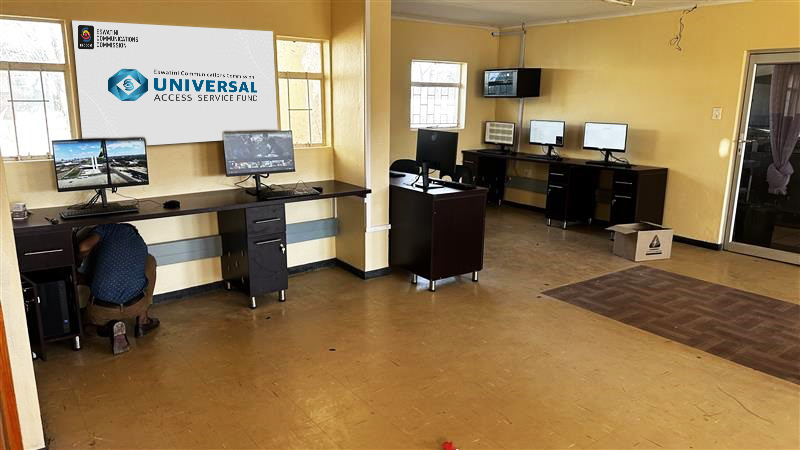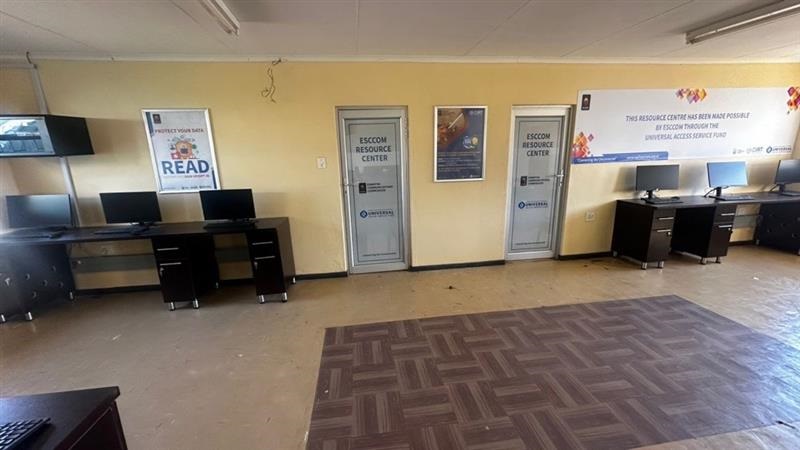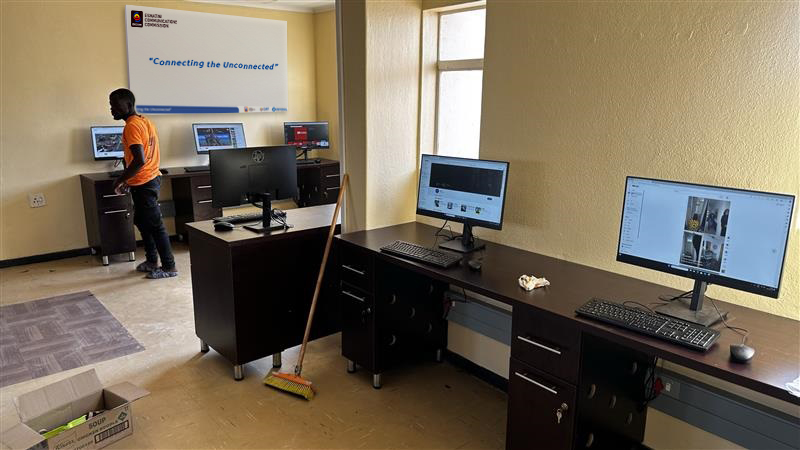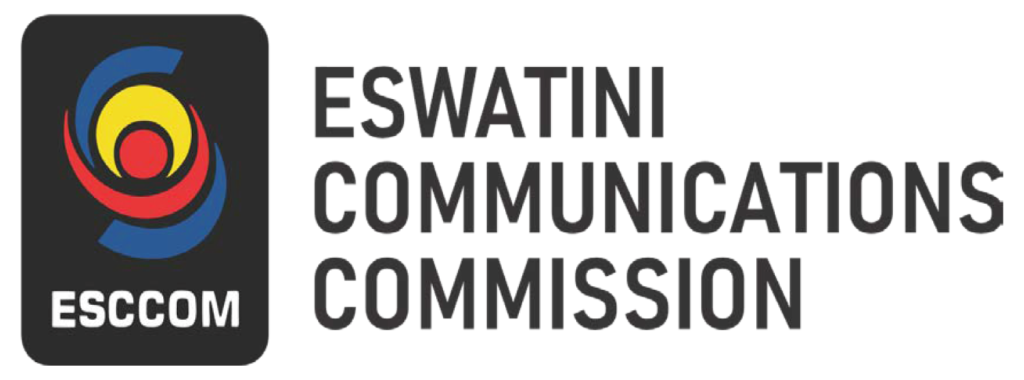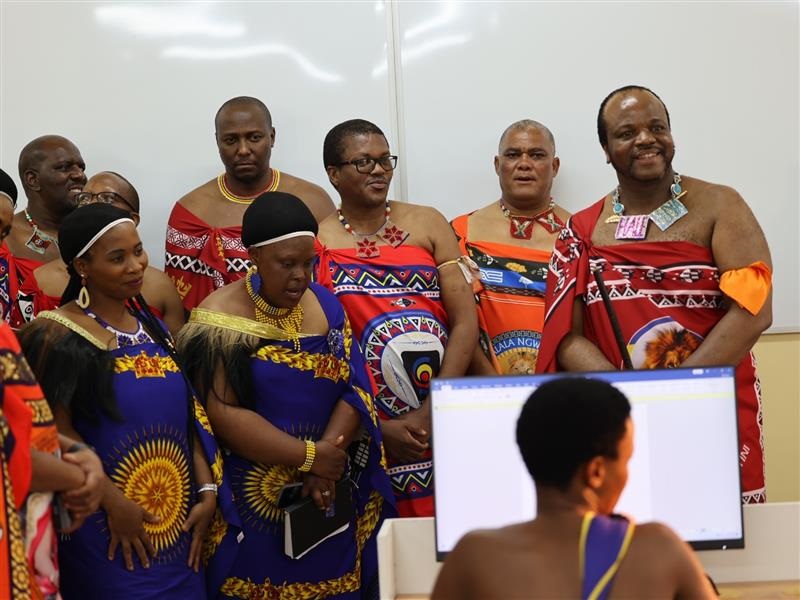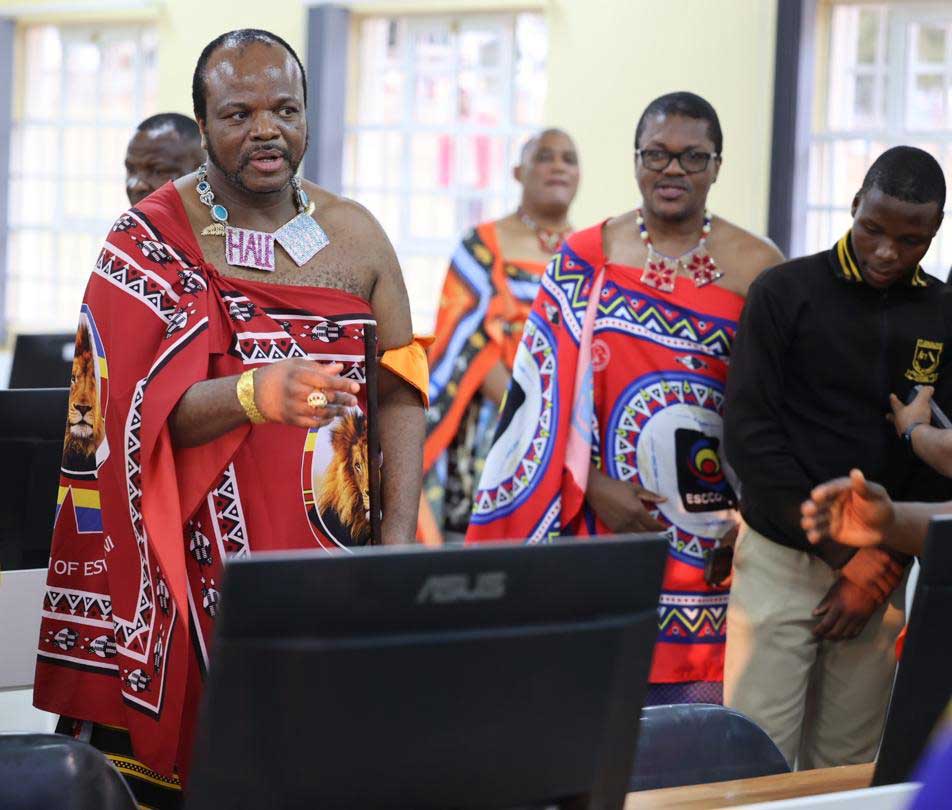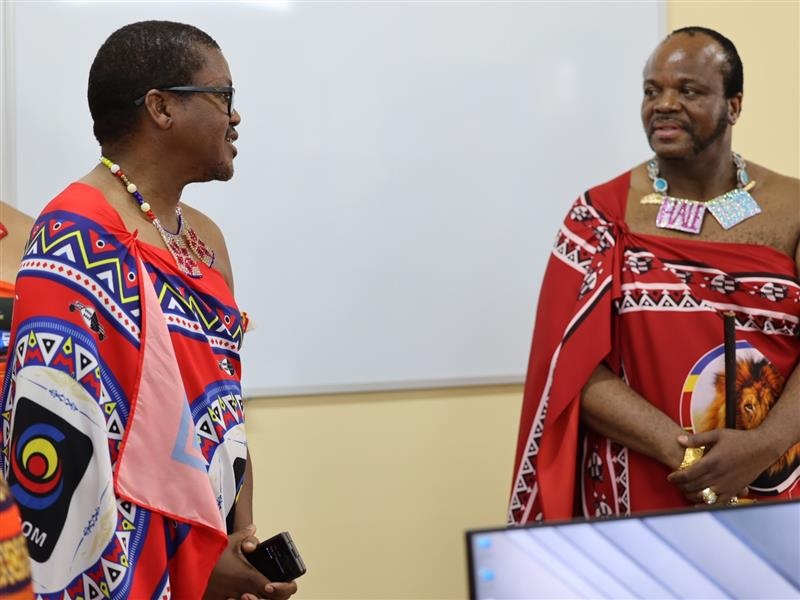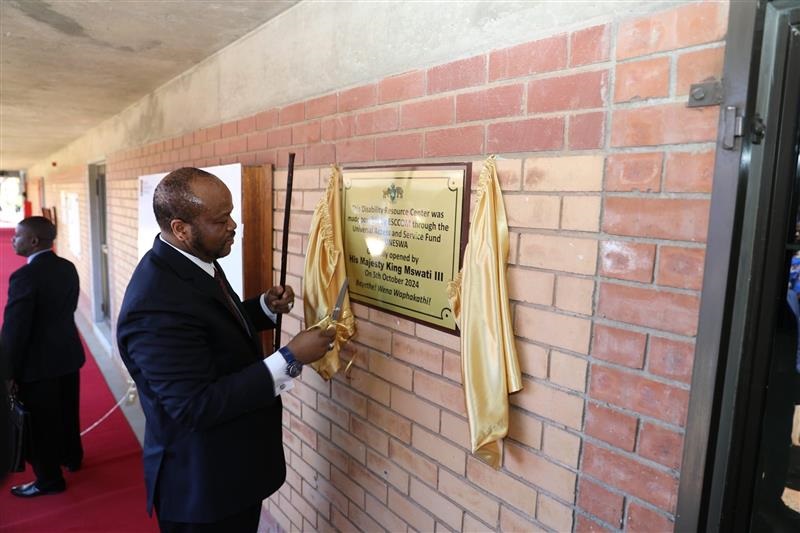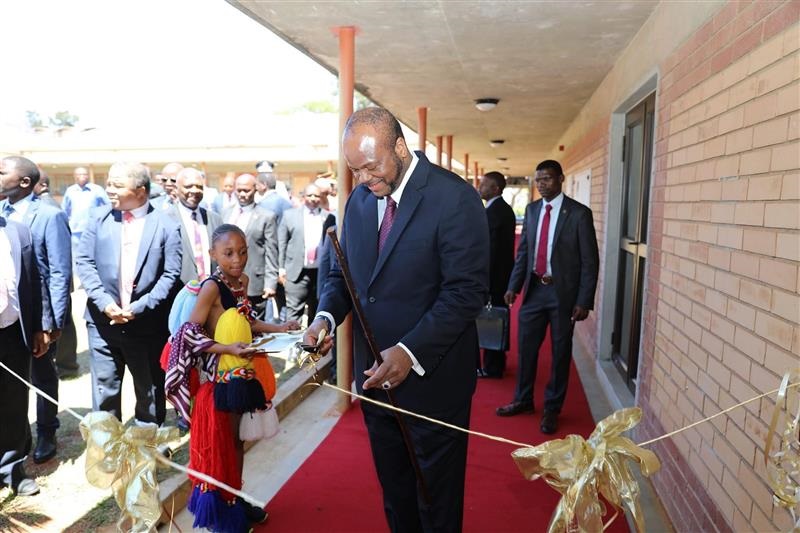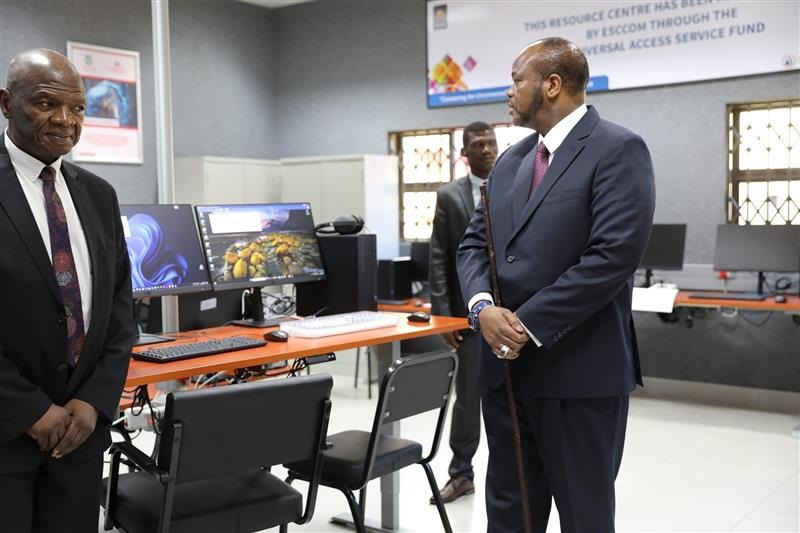Access Programmes
Project Objectives
To modernize and support the Eswatini Livestock Identification Traceability System (SLITS) through the UASF. This upgrade aims to harness the latest OpenEdge database software to enhance SLITS’ functionality and efficiency, meeting the evolving needs of livestock management in Eswatini.
Read More...
Project Description
The Department of Veterinary and Livestock Services (DVLS) has recognized the need to upgrade and support the Eswatini Livestock Identification Traceability System (SLITS), originally introduced in 2013. SLITS has been instrumental in livestock management, but with technological advancements, it is time for an upgrade to leverage the latest OpenEdge database software, promising enhanced performance.
Key Objectives and Components of the Project: Licensing Upgrade:
As SLITS expanded to numerous offices, the necessity for additional user licenses became apparent. This upgrade serves the purpose of formalizing the current system by acquiring additional OpenEdge licenses.
Mobile Application Integration: Explore the potential of mobile applications for remote access, especially at Dip Tanks. This involves the development of user-friendly mobile applications for easier access by various stakeholders, including farmers and law enforcement.
Integration with Production System: Integrating the existing Production System with the upgraded SLITS, streamlining operations, and improving data sharing and efficiency.
Enhanced Features: Develop and incorporate new features to enhance SLITS’ functionality, making it more adaptable to the evolving livestock management landscape.
Interface Enhancements: Office functions will continue to utilize Windows interfaces on Windows OS in a 32-bit web-client environment. However, for Dip Tank transactions and other occasional user interfaces, user-friendly mobile and web-browser applications will be developed, ensuring a more seamless user experience.
Continuity and Core Functionality: The project aims to retain the core functionalities of the existing SLITS system while introducing minor enhancements to accommodate the production system and other animal species. This ensures that essential features are not disrupted during the upgrade.
Benefits of this project include:
Improved Functionality: The upgrade promises enhanced performance and functionality, meeting the evolving needs of livestock management in Eswatini.
Accessibility: The introduction of mobile applications and web-browser interfaces will make SLITS more accessible to various stakeholders, including farmers and law enforcement, even in remote areas.
Efficiency: Integration with the Production System and the addition of new features will streamline operations and data management.
Compliance: The acquisition of additional licenses ensures that the system is compliant with legal requirements and regulations.

Project Objectives
The MoET in partnership with the UASF has set out to improve communication and learning for children with Cerebral Palsy. The project aims to provide assistive devices that will enhance their ability to communicate effectively and access educational resources.
Read More...
Project Description
Cerebral Palsy is a neurological condition that affects muscle control and movement. The condition is caused by damage to the developing brain, often during pregnancy or early childhood. This condition manifests in various physical challenges, such as difficulty with coordination, muscle stiffness, and sometimes speech and cognitive impairments. The severity and symptoms of cerebral palsy can vary from person to person.
The project focused on providing assistive devices to children with Cerebral Palsy, aged four and above, in Eswatini. The project team conducted assessments and the project team prescribed personalized assistive devices for 67 children, addressing their individual needs. This project represents a milestone in Eswatini’s commitment to inclusivity and empowerment. By providing assistive devices and support to children with Cerebral Palsy, the project has opened doors for effective communication and improved learning experiences. The collaborative efforts of the MoET, the UASF, implementing partners, and dedicated health professionals have laid the groundwork for a more inclusive education system in Eswatini. The project’s scope encompassed the provision of touch screen laptops, GoTalk 32+ devices, single-button speech generating devices and software, as well as personalized chairs to ensure proper eye contact and positioning
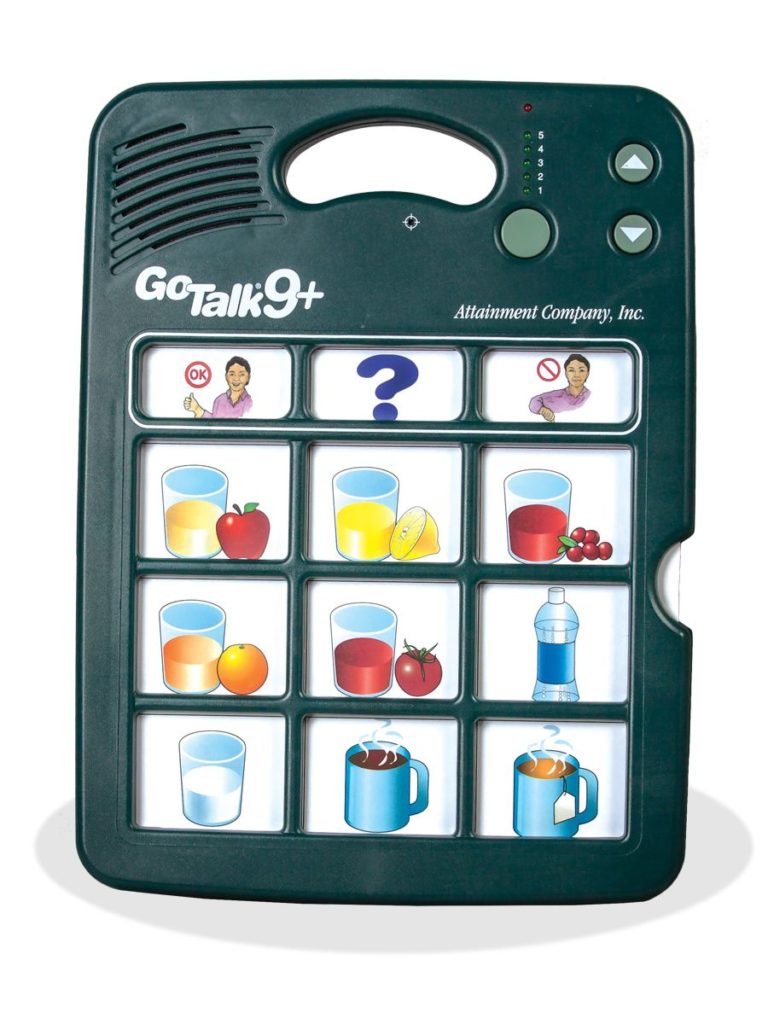
Project Objectives
The UASF’s commitment to enhancing education through improved connectivity and ICT support underscores its dedication to fostering inclusive and accessible learning environments. The core objective of this initiative is to strengthen education in the country through improved connectivity, with much focus on students with hearing disabilities.
Read More...
Project Description
The Ministry of Education and Training (MoET) has benefited from UASF’s support, particularly in the realm of Information Communication Technology (ICT). ICT plays a pivotal role in mainstreaming children with disabilities and special needs into the education system. This aligns with the broader goal of fostering inclusive, accessible, and equitable education, which entails removing barriers to access education and promoting lifelong learning.
Observing the positive impact of assistive gadgets, UASF’s focus on enhancing learning outcomes while making education enjoyable for learners with disabilities. While the primary focus is on Deaf schools, mainstream students can also benefit from these tools. The introduction of interactive whiteboards allows teachers to digitize lessons for easy access on students’ devices, with materials stored in cloud storage for convenient access.
In the realm of Deaf education, modern technology is ushering in significant changes that enhance the learning experience for both students and teachers. In primary and high schools catering for Deaf students, interactive whiteboards have been integrated into the learning environment. Also, the introduction of the Uni device is revolutionizing communication by converting sign language into speech and text. These innovations are valuable for individuals who may not be proficient in sign language, benefiting both learners and educators.

Project Objectives
In support of the Ministry of Education and Training’s initiative, focusing on making ICT a core subject and integrating technology into teaching and learning. The Fund has provided mobile labs equipped with 45 laptops per school to different schools around the country.
Read More...
Project Description
The project primarily targets rural schools, many of which lack physical ICT laboratories. Over 20 schools across the country have benefited from this initiative. This project primarily focuses on high school students, especially those in completing classes. The laptops come equipped with the latest Microsoft education applications, enhancing the learning and teaching processes. The overarching goal is to empower communities with ICT skills necessary in the digital age, enabling them to compete actively in the global landscape by introducing ICT as a core subject at an early stage. The devices provided to beneficiary schools serve both teachers and learners, equipping them with essential ICT skills and enhancing education through technology.
This project recognizes the importance of inclusive education. Learners with disabilities who may struggle in traditional classroom settings benefit significantly from computer-based technologies. These technologies provide a broader range of educational activities to meet various needs, from mild learning disorders to severe disabilities. The project aims to create an inclusive learning environment as it continues to teach ICT, ensuring that all students, regardless of their abilities, have access to quality education.
The laptops integrate seamlessly with classroom resources, eliminating the need for teachers to leave their regular classrooms or students to move between rooms. This optimizes teaching and learning time. The impact of computer technology in education remains paramount, and ongoing efforts to enhance its integration into educational institutions are crucial. This contribution significantly enriches the school curriculum, benefiting school administrators, teachers, and students, thus enhancing the education system.
The list of educational institutions that have benefitted from the UASF:
Hhohho Region
- Nyakatfo High School
- Fundukuwela High School
- Mavula Community High School
- Siphocosini High School
- Esigangeni High School
Lubombo Region
- Good Shepherd High School
- Gilgal High School
- Duze High School
- Mphelandzaba High School
- Charles Wesley High School
Manzini Region
- Florence Catholic High School
- Moyeni High School
- Malunge High School
- Khuphuka High School
- Bhunya Central High School
Shiselweni Region
- Ekuthuleni High School
- KaMzila High School
- Esandleni High School
- Nhlangano Central High School
- Makhosini High School
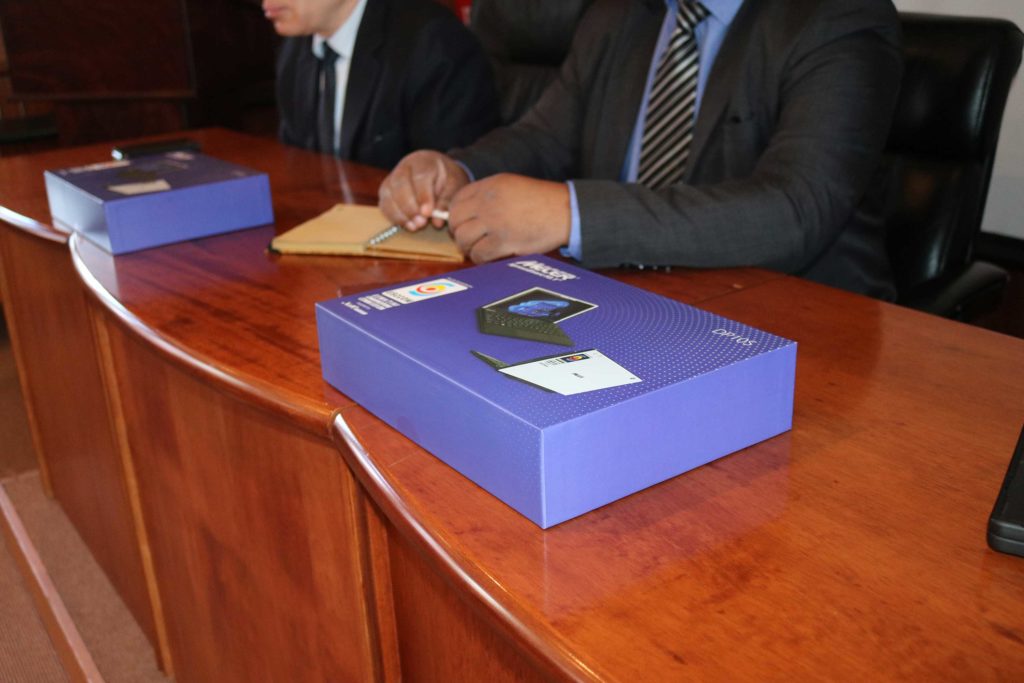
Project Objectives
As part of its ongoing mission to bridge the digital divide and promote universal access to ICT, the Universal Access and Service Fund (UASF), under the Eswatini Communications Commission (ESCCOM), has funded and equipped an ICT laboratory at Etjendlovu High School. Officially handed over to His Majesty King Mswati III, this initiative addresses the critical need for digital literacy among secondary school students, ensuring they acquire essential technology skills for future careers in an increasingly digital world.
Read More...
Project Description
Recognizing that ICT proficiency is fundamental to 21st-century education and employment, UASF has provided a dedicated space for technology-driven education. The initiative includes the provision of 25 fully functional computers to facilitate hands-on learning, ensuring that students have access to modern digital resources. High-speed internet connectivity has been installed to support research, e-learning, and digital collaboration, fostering an interactive learning environment that enhances student engagement. Additionally, the lab is structured to provide comprehensive digital literacy training, equipping students with the necessary skills to navigate and excel in a technology-driven economy.
Commitment to Educational and Economic Growth
The impact of this ICT lab extends beyond the school, fostering equal opportunities and digital empowerment in education. Students will develop proficiency in ICT subjects, enhance their research capabilities, and acquire technical skills essential for further education and careers in STEM fields. Rural schools often lack access to modern ICT resources, putting their students at a disadvantage. This initiative ensures that learners at Etjendlovu High School receive the same digital exposure as their urban counterparts, thereby leveling the playing field and promoting educational equity. Furthermore, early exposure to ICT skills significantly enhances employment prospects. Digital literacy is now a prerequisite for success across various sectors, including IT and business. By equipping students with essential technology skills, this project contributes to Eswatini’s broader economic development goals, fostering a future-ready workforce.
Commitment to Bridging the Digital Divide
UASF remains dedicated to ensuring that all students, regardless of location, have access to quality digital education. Through continued investment in ICT infrastructure, training, and connectivity, UASF is laying the foundation for a tech-savvy generation that will drive Eswatini’s digital transformation. Empowering students today means investing in Eswatini’s future. The ICT lab at Etjendlovu High School is more than just a facility—it is a commitment to knowledge, opportunity, and innovation.
Project Objectives
This project ensures access to learning resources for all learners, formal and non-formal. Provides technical support to instructors, learners, and users while creating an inclusive eLearning framework and facilitates technology-enabled teacher training. The Learning Passport represents a significant leap forward in transforming education in Eswatini, offering a dynamic and inclusive approach that adapts to the evolving needs of students and educators.
Read More...
Project Description
The Ministry of Education and Training (MoET) is committed to providing accessible and high-quality education for all Swati citizens. To adapt to new challenges posed by the COVID-19 pandemic, the Fund partnered with MoET and launched the Learning Passport (LP) initiative in collaboration with UNICEF. The LP is a versatile online and offline learning platform developed by Microsoft.
The Learning Passport (LP) was created to enable students to access their studies online. The focus currently is to make available all high school subjects on the platform. The initiative also helps to prepare the country for the unlikely event of another pandemic or similar catastrophe. Initially introduced at the senior secondary/high school level, focusing on core subjects to minimize education barriers. Practicing teachers create lesson content, which is digitized and uploaded to the LP.
The LP offers versatile access to global educational resources. It is accessible both online and offline via mobile devices, making it adaptable to various learning environments. It can also be individually customized; teachers can tailor teaching materials to accommodate diverse learning styles and track individual learner progress efficiently.
The Learning Passport represents a remarkable leap forward in transforming education in Eswatini, offering a dynamic and inclusive approach that adapts to the evolving needs of students and educators.

Project Objectives
This initiative aims to make inclusive education a reality for all learners, regardless of their physical abilities, with a primary focus on supporting students with visual impairment. Through the strategic implementation of technology and innovative teaching methods, the project intends to empower more students to complete high school successfully and pursue higher education.
Read More...
Project Description
While considerable progress has been made in supporting students with visual impairment through assistive devices, there is an ongoing need to explore cutting-edge technologies and solutions tailored to their unique requirements. This includes the development of specialized software and hardware to facilitate effective communication and learning for students with visual impairment.
To date, over 30 students have benefited from this support. Some have not only completed high school but also enrolled in tertiary-level education. The initiative provided these students with personal specialized laptops and software to assist them in their academic studies.
The project aligns with Article 9 of the UN Convention on the Rights of Persons with Disabilities, ensuring access to information and communications technologies and systems for persons with disabilities on an equal basis with others. It seeks to enhance the overall quality of life and education for individuals with visual impairments, enabling them to excel in both special and mainstream educational settings.
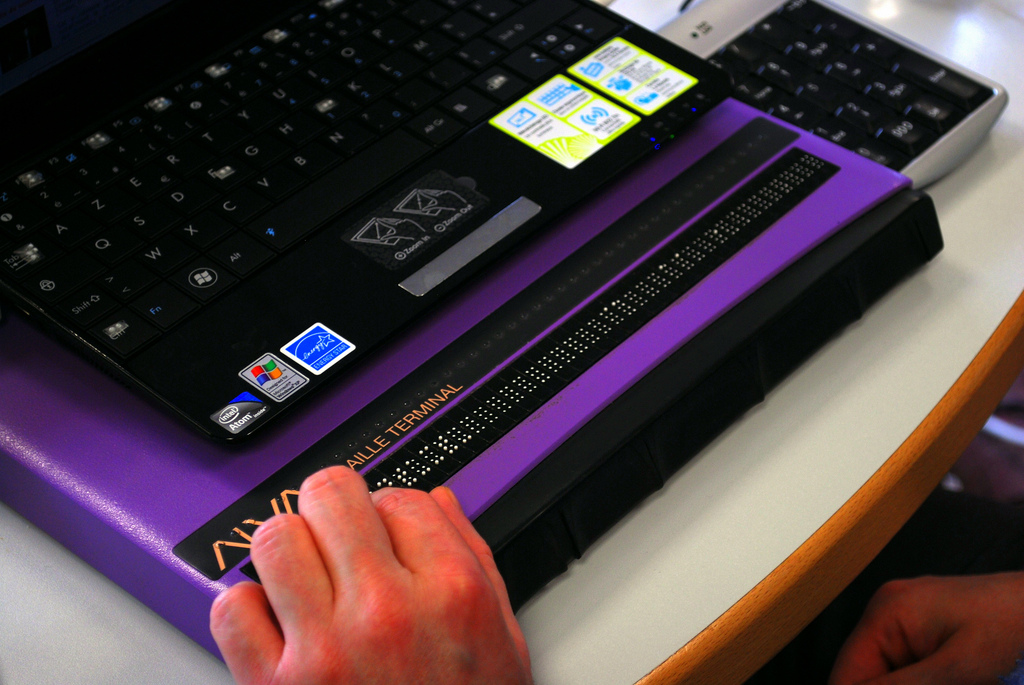
Project Objectives
The Universal Access Service Fund (UASF) supported the University of Eswatini, Institute of Distance Education (IDE) in a bid to foster innovative and inclusive learning. Of the support were 45 tablets and a storage trolley which have opened new horizons in education, harnessing the power of technology to benefit both students and educators.
Read More...
Project Description
The Mobile Lab Project, supported by the Fund, stands as a testament to the Fund’s commitment to enhancing the learning experience through technology. This initiative centres on the deployment of a mobile lab, dedicated to facilitating access to modern educational resources to both staff and student. This project comes at a crucial juncture, aligning with the broader goal of advancing tech integration in education.
Project Objectives
- Enhanced Staff Training: One of the primary objectives of the Mobile Lab Project is to equip course instructors with the necessary skills to effectively integrate technology into the teaching and learning process. By offering hands-on professional development opportunities, empower educators to create instructional videos and engage in online facilitation. This not only expands technological proficiency but also enhances the ability to effectively engage students, fostering a more dynamic and interactive learning environment.
- Student Empowerment: While the initial stages of the project saw some pilot programming software, such as Java NetBeans trailed, IDE encountered limitations related to disk space that restricted broader student usage. However, with strengthened university security measures in place, they are now well-positioned to expand student access to the mobile lab. This expansion primarily involves offering coding classes and promoting Bring Your Own Device (BYOD)-enhanced lessons, providing students with greater opportunities for immersive and innovative learning experiences.
The Mobile Lab Project is a testament to the dedication to leveraging technology to empower educators and students alike. It acknowledges the value of providing equal access to technology for all and is committed to ensuring a brighter, more innovative, and inclusive future for the educational sector. Moving forward, it is thrilling to witness the transformative impact of this project and the profound changes it will bring to the world of learning.
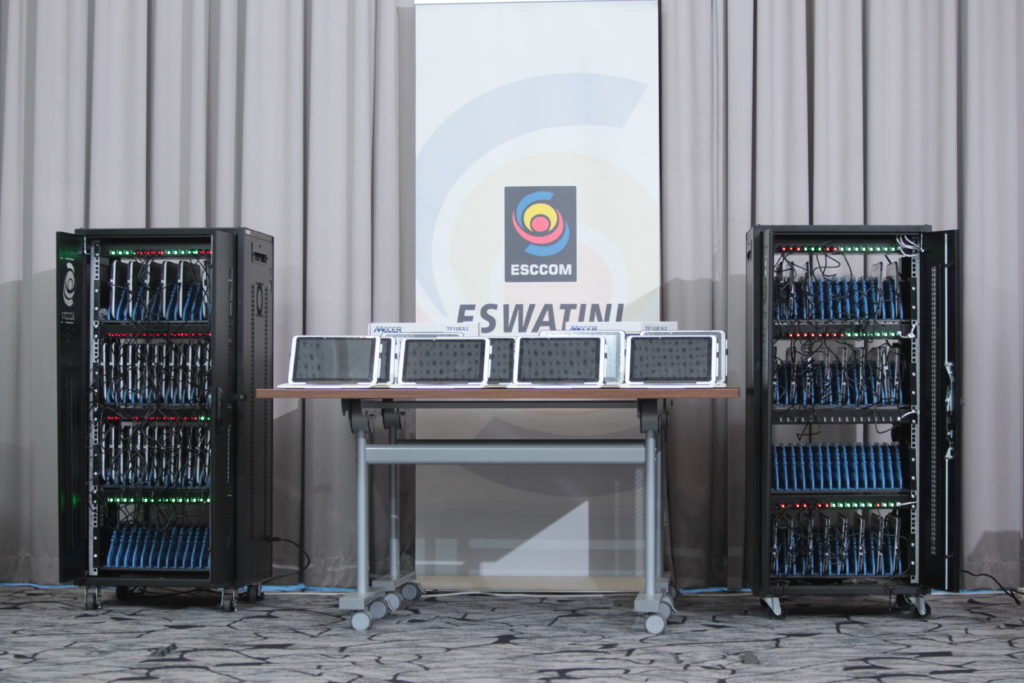
Project Objectives
The Universal Access and Service Fund (UASF), in partnership with the Eswatini Communications Commission (ESCCOM), is assisting the University of Eswatini (UNESWA) create a Disability Support Centre. This initiative aims to provide essential support and technology for students with various disabilities.
Many students at UNESWA struggle due to a lack of assistive tools and accessible classrooms. To address this, UNESWA and ESCCOM have converted a classroom into a fully equipped support centre, promoting a more inclusive and accessible education.
Read More...
Project Description
The Disability Support Centre will provide assistive technology such as Braille displays, screen readers, and speech-to-text software. Study spaces will minimize distractions, and accessible learning materials will cater to various needs. Students can also access mentorship and tutoring services.
Equipped with modern computers and high-speed internet, the Centre will feature ramps and ergonomic furniture for wheelchair users. Staff will be trained in inclusive education and assistive technology, and regular monitoring will enhance services while partnerships with disability rights organizations will promote advocacy for inclusive learning.
Commitment to Digital Inclusion
Eswatini has made strong commitments to disability rights through policies like the National Disability Policy and the Disability Act. The UASF’s investment in this Centre is part of fulfilling these commitments, ensuring that students with disabilities are fully included in higher education.
By supporting this initiative, UASF and ESCCOM are working towards a future where all students, regardless of ability, have equal access to education and technology. This project is a step forward in making Eswatini a more inclusive and digitally connected society.
Project Objectives
The Ministry of Health (MOH) in the Kingdom of Eswatini has introduced the Client Management Information Systems (CMIS) project. The primary goal of this initiative is to revolutionize the healthcare system in Eswatini by digitizing various aspects of health management. This transformation is made possible through the unwavering support of key stakeholders, most notably the Universal Access and Service Fund (UASF).
Extending Healthcare Access: The central aim of the CMIS project is to extend the reach of the healthcare management system to all healthcare facilities. By doing so, the project ensures that every citizen has access to quality healthcare services. Over 220 healthcare facilities across the Kingdom have embraced this digital transformation, ushering in a new era of high-quality healthcare services.
Empowering Healthcare Professionals: The CMIS equips healthcare professionals with the necessary digital tools and resources to deliver healthcare services efficiently and effectively, whether in established health centers or during outreach initiatives.
Seamless Health Management: One of the core objectives is to improve healthcare services by providing practitioners with the ability to seamlessly access and utilize the CMIS platform. This ensures that patient data and healthcare information are easily accessible and can be used to deliver optimal care.
Read More...
Project Description
The Client Management Information Systems (CMIS) are comprehensive software solutions designed to manage and organize patient’s information, streamline administrative processes, and improve the quality of care. These systems are primarily used by healthcare providers, such as hospitals, clinics, and medical practices, to maintain detailed records of patient interactions and manage various aspects of patient care. CMIS stores and manages Electronic Health Records, which contain a patient’s medical history, diagnosis, treatment plans, medications, allergies, and other critical health information. This data is structured and easily accessible to authorized healthcare professionals. The CMIS project has already made significant strides in bringing technology to the forefront of healthcare in Eswatini. This transformation includes:
CMIS Plus/Lite Implementation: The implementation of Client Management Information Systems Plus and Lite versions for outreach sites ensures that real-time data transmission occurs seamlessly across the healthcare landscape. This capability is especially valuable in mobile health service settings, where responsiveness and data accuracy are critical.
End-User Devices: The Ministry of Health received support from the UASF in the form of 150 mini-laptops. These laptops are essential tools for healthcare practitioners, as they allow access to the CMIS platform even during outreach service provision.
The UASF continues to provide crucial support to the Ministry of Health. This support is instrumental in strengthening Health Information Systems and aligning with the government’s vision of leveraging technology to ensure universal access to healthcare services. Moreover, the Ministry’s partnership with the UASF has extended its reach to support organizations like Hospice at Home, Hope House, and Cheshire Homes, granting them access to the CMIS platform and providing them with the necessary mini laptops to enhance their services.
The CMIS project stands as a testament to the power of collaboration and innovation in transforming healthcare delivery. It represents a commitment to ensuring that every citizen in the Kingdom of Eswatini has access to high-quality, digitally enabled healthcare services. This initiative is not just a technological advancement; it is a step towards a healthier, more inclusive future for all. The data it captures covers various aspects of patient care, from basic demographic information to complex medical histories and treatment plans.

Project Objectives
In the pursuit of inclusivity and equitable access to information for the Deaf community, the Universal Access and Service Fund (UASF) has recognized the need to enhance translation capabilities in Sign Language. The Deaf community deserves equal access to information. The primary objective of this initiative is to make information accessible to the Deaf community through Sign Language translations and any other of digital information dissemination initiatives. It is a positive step towards a more inclusive and accessible future for the Deaf community in Eswatini.
Read More...
Project Description
The demand for expanding translation capacity has grown significantly as the Deaf community seeks to meet its evolving information needs. To address this, the Eswatini National Association of the Deaf required technological equipment to bolster their studio operations. This equipment includes an Industrial Digital Camera, Tripod, Studio Lights, Desktop Studio Computer for editing and storage, 4x Tablets, 4x Laptops, Wireless Internet connection, Studio sound equipment, Projector, Software, and a Smart Interactive display. These tools have enabled the translation of documents into Sign Language. These include curriculum, policies, the national constitution, and other documents. The UASF’s commitment to this cause and the observed positive impact on Deaf students underscore the importance of this initiative. With UASF’s support, the Deaf community has been digitally enabled to create a more inclusive and accessible future in Eswatini, ensuring that information reaches all members of society, regardless of their hearing abilities.

Project Objectives
Eswatini, like many developing nations, recognizes the challenges faced by persons with disabilities (PWD). In response to these challenges, the Government of Eswatini, in collaboration with key development partners, including the Universal Access and Service Fund (UASF), has initiated a project with a clear objective – to empower PWD by providing them with user-friendly mobile gadgets.
These gadgets aim to grant PWD independent access to vital Government services reducing their vulnerability, improving their quality of life, and fostering inclusivity and independence among the PWD population. Eswatini is home to over 150,000 persons with disabilities, constituting 13% of the country’s population. These individuals vary in their disabilities, and census data has revealed disparities in disability rates across different age groups, genders, and urban and rural populations.
To ensure that PWD receive the support they require, the UASF is taking deliberate steps to provide user-friendly mobile phones tailored to their needs. These devices will enable PWD to independently access their quarterly Government grants, addressing the existing lack of access to mobile technology, which often leaves many PWD vulnerable to exploitation and abuse.
Read More...
Project Description
The primary objective of this initiative is to empower PWD by offering them the means to access essential Government services through user-friendly mobile gadgets. By doing so, the project aims to achieve the following goals:
Reducing Vulnerability: The initiative seeks to diminish the vulnerability of PWD by providing them with the tools to access crucial financial support increasing their independency.
Promoting Inclusivity: Through the provision of user-friendly mobile gadgets, the Government and the UASF aim to foster inclusivity, ensuring that PWD are not left behind in the digital age and can participate fully in various aspects of society.
Ensuring Independence: The initiative aims to grant PWD the independence they deserve by equipping them with the necessary tools to manage their financial affairs and navigate their daily lives with greater autonomy.
The Government of Eswatini, in partnership with the UASF, is deeply committed to promoting inclusivity, reducing vulnerability, and enhancing the overall well-being of persons with disabilities in the country. By providing tailor made mobile gadgets, this collaborative effort is paving the way for the empowerment of PWD, improvement in their quality of life, and the assurance of equal access to essential social services through mobile technology. This project represents a significant step toward creating a more inclusive and supportive environment for PWD in Eswatini.
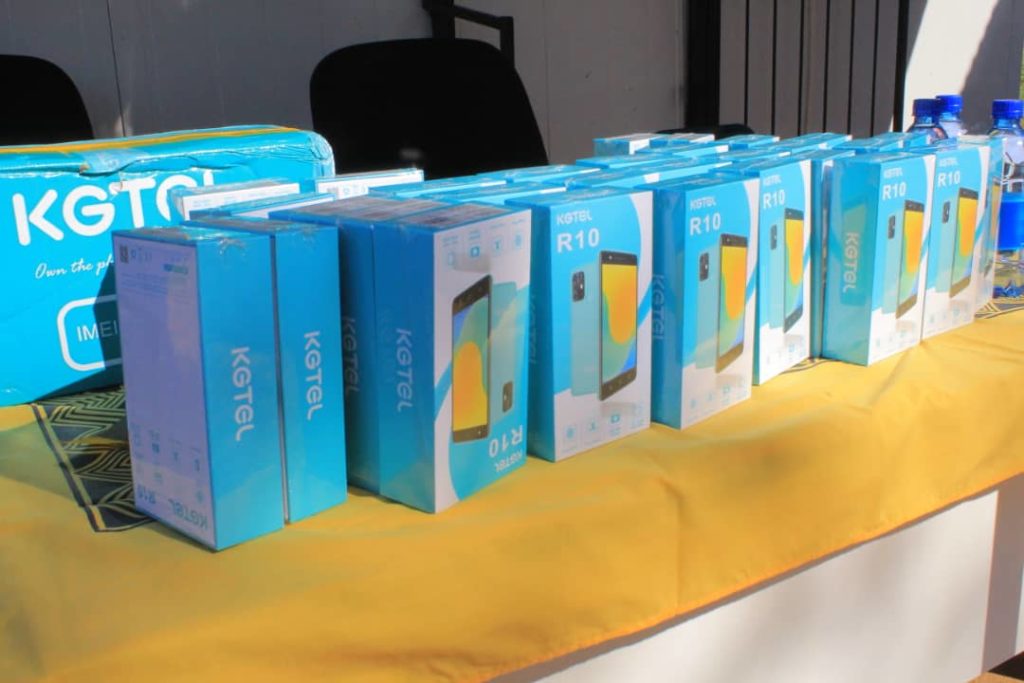
Project Objectives
The primary objective of this project is to enhance government service delivery and promote decentralization efforts by providing essential end-user devices to Tinkhundla Service Centres, thereby improving accessibility and efficiency in the delivery of government services.
Read More...
Project Description
In the pursuit of decentralization and the improvement of service delivery, the Ministry of Tinkhundla Administration and Development identified a critical need for office equipment support. The project’s focus was on acquiring end-user devices to streamline operations and enhance access to government services across various service centers.
The Universal Access and Service Fund (UASF) wholeheartedly supported this strategic government initiative by providing the necessary equipment. The distributed equipment, benefiting more than five Tinkhundla Service Centres, includes heavy-duty/universal photocopying machines, Oki line printers for revenue services, desktop computers, uninterrupted power supply (UPS) units, and color laser printers. The UASF’s support has been indispensable in equipping these centres with essential tools that were previously lacking and hindered the delivery of services in the centres. This support has resulted in significant milestones achieved, marking substantial progress towards a more accessible, efficient, and decentralized government system.
The UASF’s commitment to bridging resource gaps and advancing decentralization efforts in Eswatini holds the promise of further enhancing public service delivery. This initiative is a significant step towards fostering a more connected and responsive government that benefits the citizens of Eswatini.
The service centres that benefited from this initiative are:
- Lugongolwenin Inkhundla Service Centre
- Lavumisa Service Centre
- Mayiwane Inkhundla Service Centre
- Hluti Service Centre
- Siphofaneni Service Centre
- Lobamba
- Mhlambanyatsi
- Mayiwane
- Gege

Project Objectives
The primary objective of this initiative is to enhance the quality and capabilities of both Eswatini Television and Eswatini Broadcasting Information Services (EBIS) by providing essential end-user equipment.
Read More...
Project Description
The UASF has extended its support to the national broadcaster, with the aim of elevating the quality and functionality of content delivery from Eswatini Television and Eswatini Broadcasting Information Services (EBIS). This support encompasses the provision of a range of end-user equipment, including studio equipment, outside broadcasting equipment, and newsroom equipment.
Key Objectives:
Quality Live Reporting: This project seeks to ensure that national events receive reliable and high-quality live coverage. The goal is to bring the nation closer to significant events by delivering exceptional live reporting.
Enhanced Live Sports Commentary: The Fund is committed to improving the quality of live sports commentary, making every goal, victory, and defeat come to life for the viewers and listeners. Sports enthusiasts can look forward to an immersive experience.
Interactive Programmes with Live Call-Ins: The UASF wants to foster interactive programmes that allow viewers and listeners to participate through controlled live call-ins.
Engagement Through Digital Media Platforms: In today’s digital age, the aim is to engage the audience through various digital media platforms. Stay connected, informed, and entertained, no matter the geographical location.
Incorporation of Novel Technology: The UASF’s commitment to innovation is unwavering. It will implement novel technology, such as visual radio, to modernize broadcasting capabilities. This will not only enhance the quality of content but also make it more visually appealing and engaging.
By providing these essential resources and cutting-edge technology, the project aligns with the overarching goal of enhancing the national broadcasting landscape. The Fund goal is to assist the broadcasters in delivering content that meets the highest standards of quality and engagement, ensuring that ESTV and EBIS remain at the forefront of broadcasting excellence.

Project Objectives
The Eswatini Communications Commission (ESCCOM) through the Universal Access and Service Fund (UASF) is actively empowering refugees and asylum seekers at the Malindza Refugee Camp by enhancing digital access. As part of this initiative, a computer lab has been established, and subsidized Wi-Fi access is being rolled out to improve education, communication, and economic opportunities for camp residents.
Recognizing the importance of digital resources in fostering self-reliance and improving quality of life, ESCCOM has taken steps to bridge the digital divide within the camp. With limited access to information and technology previously posing a challenge, this initiative is already enabling individuals to connect, learn, and explore new opportunities.
By providing essential digital tools and connectivity, UASF continues to support the integration and empowerment of displaced communities, ensuring they have the resources needed to thrive in an increasingly digital world.
Read More...
Project Description
The initiative will introduce subsidized Wi-Fi capabilities, granting each resident 500MB of daily data access. This provision will enable individuals to stay connected, seek employment opportunities, and access online educational resources. A fully equipped computer lab will be established, offering a dedicated space for research, e-learning, and digital literacy training.
Commitment to Digital Inclusion
Beyond providing immediate access to technology, this project is designed to create lasting social and economic benefits for displaced communities. By leveraging digital tools, refugees and asylum seekers will have the opportunity to develop critical skills, improve their education levels, and access employment opportunities.
Through this partnership, the Universal Access and Service Fund reaffirms its commitment to using ICT as a tool for inclusion and empowerment. By ensuring that no one is left behind in the digital era, this initiative paves the way for a more connected and self-sufficient refugee community
